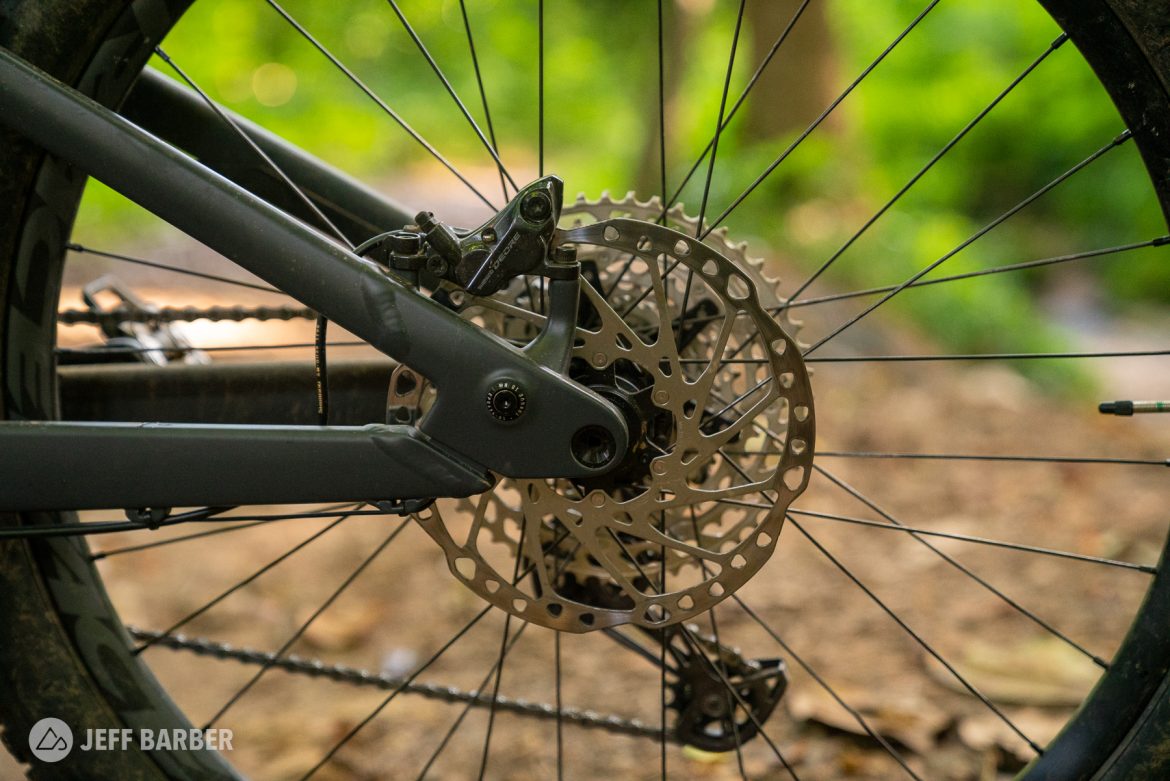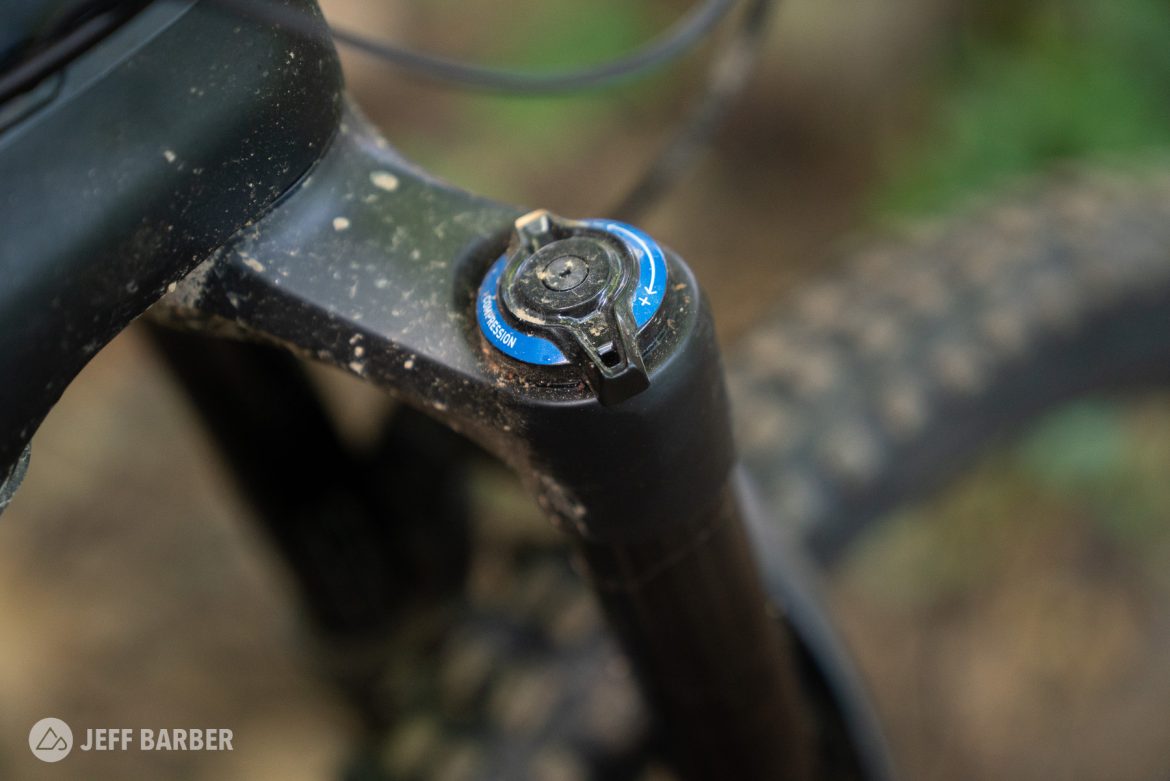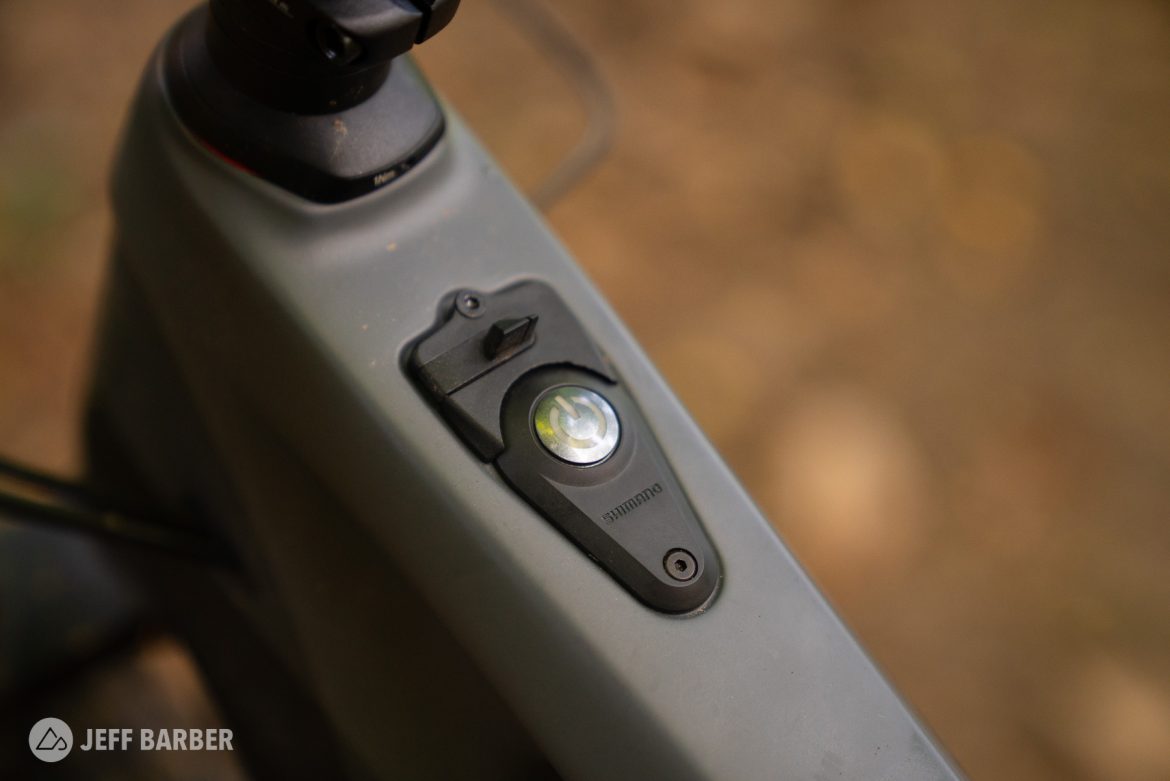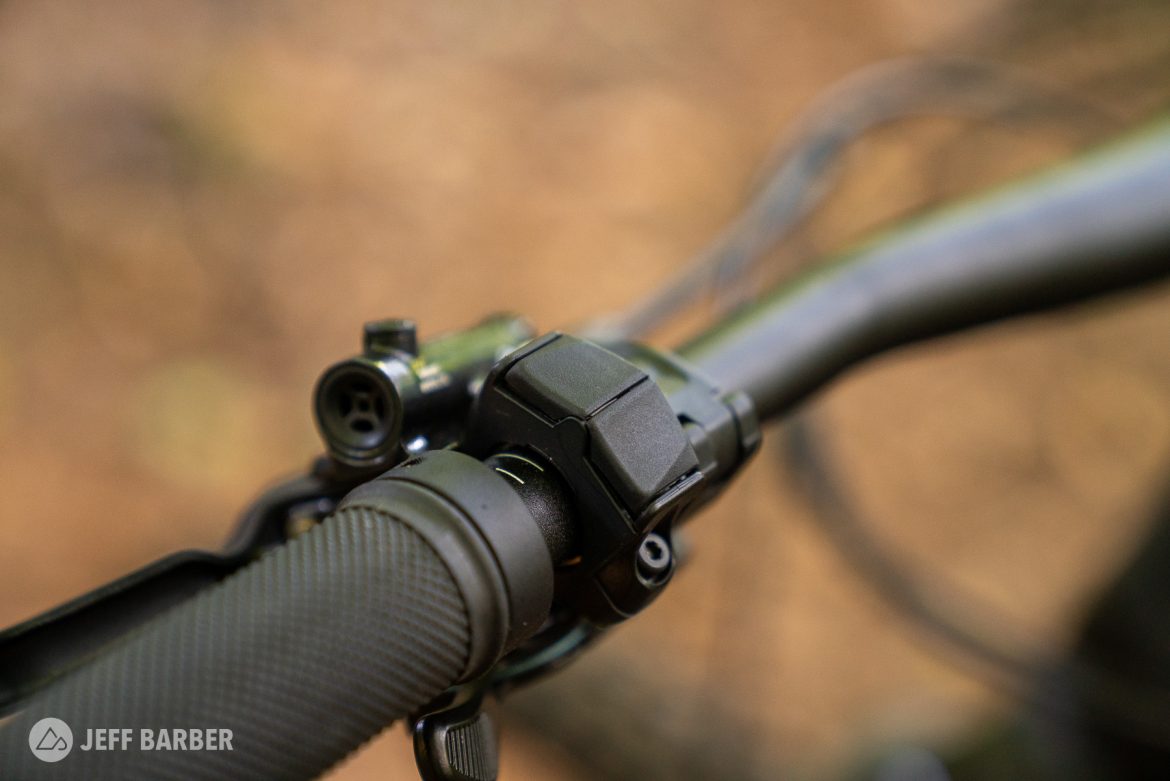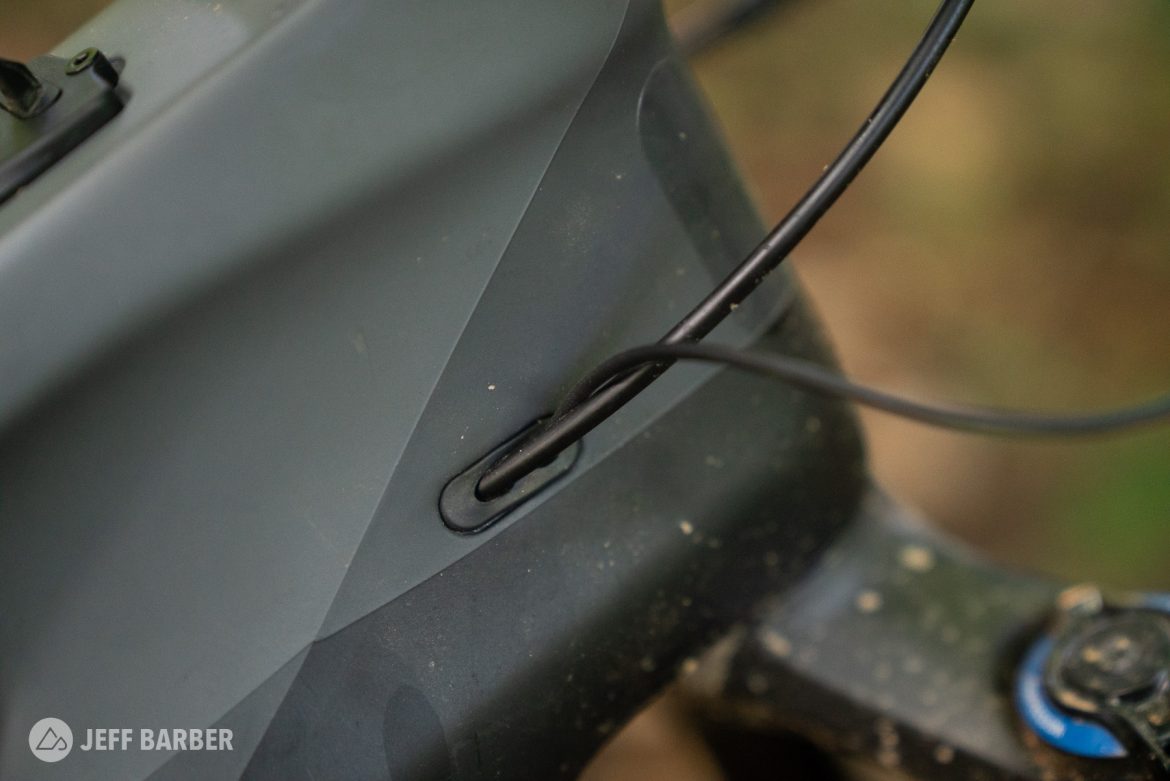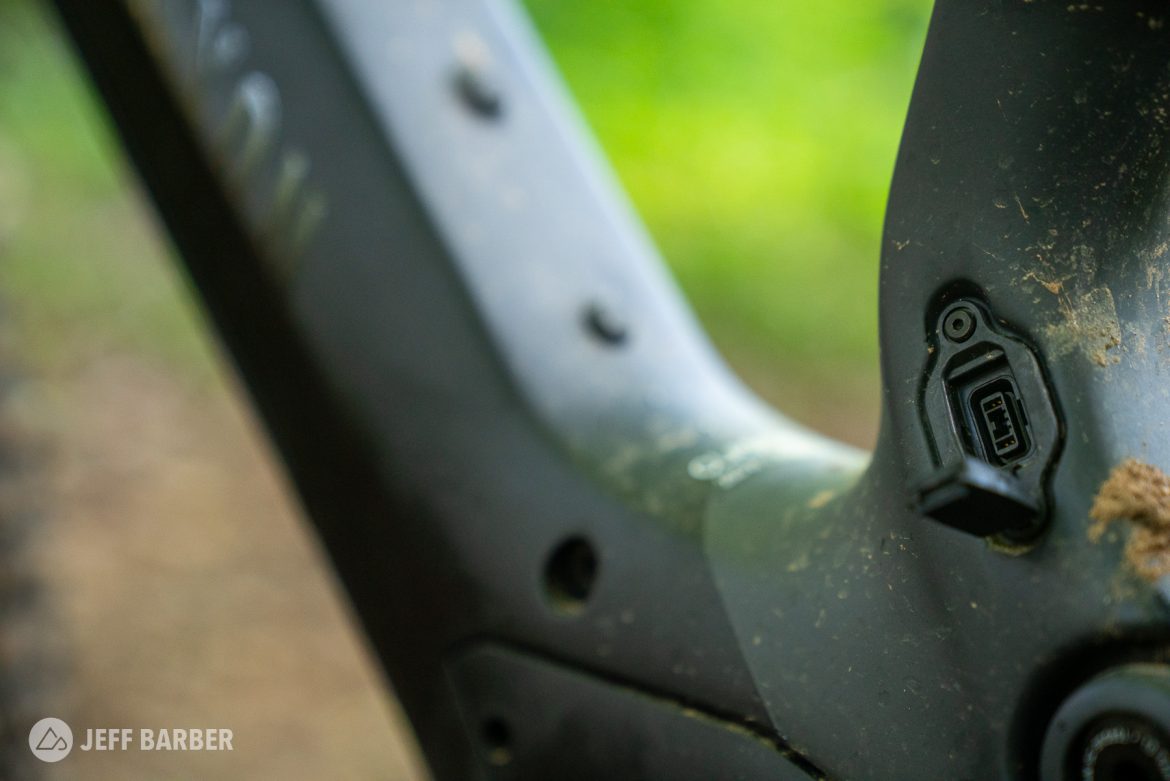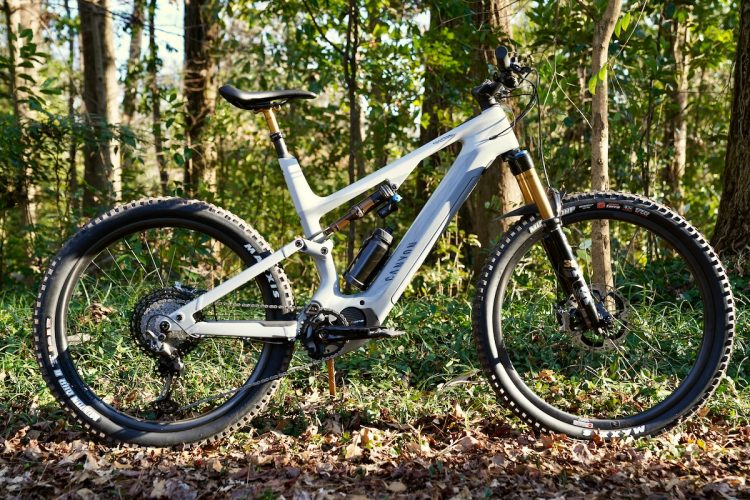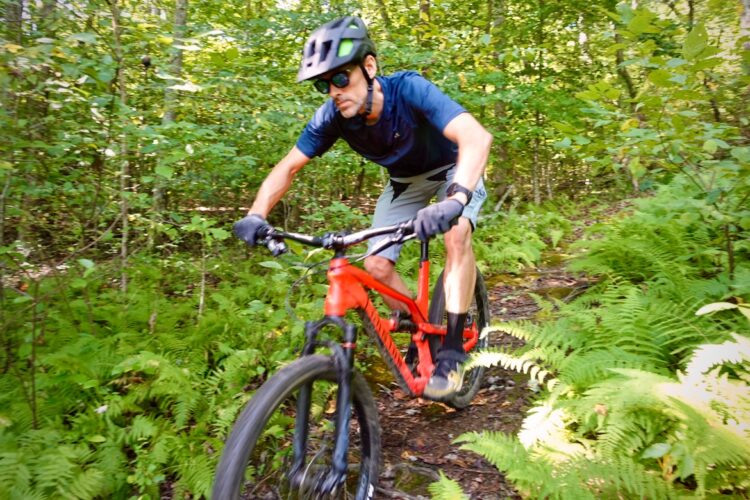
Be sure to read our in for test article about the Canyon Spectral:ON for full specs and additional photos.
It’s been a long ride on the Canyon Spectral:ON. Originally in for test back in March, and swapped out for another build along the way, I’ve really put the Spectral:ON through the wringer. Along the way I’ve learned a lot about the latest electric mountain bike from Canyon, and to be honest I’m a little sad to be sending it back.
On the trail
To recap from the in-for-test article, the Spectral:ON features 150mm of suspension travel front and rear, along with a mixed-wheel setup. Not surprisingly, the bike absolutely rips going downhill. Compared to the non-electric 27.5 Spectral I tested last year, the suspension feels a bit more linear and it’s not quite as supple off the top. I suspect this is partly to provide extra support for the added weight of the battery and motor. The upshot is the suspension is ready to party on fast, rough descents. I was surprised I never found a harsh bottom out either, despite riding some gnarly trails at the edge of speed and safety.
Through rocky, steep terrain the Spectral:ON has no problem holding its line. The weight distribution of the battery and motor is well balanced, keeping the bike especially planted through corners. And yet, despite weighing north of fifty pounds, the Spectral:ON doesn’t feel bound to the ground. The suspension is easily tuned to provide the right amount of preload to launch off roots and sail over the rough stuff, making the bike feel much lighter than it is. I would describe the descending characteristic as more stable than playful, though that’s not to say the bike doesn’t like to play. It just takes a bit more effort and creativity.

When it’s time to climb, the Spectral:ON gets to work. The final build I tested comes with a 34T chainring which I found doesn’t let the rider get away with poor gear selection on the climbs, even in the highest assist mode. Particularly steep sections require all the finesse you can muster, and unfortunately the slack, 74.5° seat tube angle doesn’t do any favors. On consistent climbing grades, the front wheel tracks well and even in at the lowest level of assistance the motor makes a huge difference. Perhaps the best feeling is getting to the top a little faster, but more importantly, being able to chat with your buddies along the way.
The Shimano EP8 offers plenty of torque and it’s incredibly quick to respond. The system does a good job limiting slip and I found it maintains traction just as well as a fully-human-powered drivetrain. There is a limit to the torque however, as I found when trying to climb particularly steep angles in lower gears. There are plenty of situations where even maximum electric torque won’t bail the rider out.
Away from the mountains, I found the Spectral:ON transformed relatively flat, pedally (and boring) trails into skills training sessions. The bike handles extremely well through tight, twisty trails, and with a little extra speed boost from the motor level trails can feel like full-on descents.
On particularly technical trails, and especially switchback climbs, the limited turning radius of the Spectral:ON is noticeable. The headset is designed to prevent the fork and bars from slamming into the top and/or down tube, and it’s a nice feature to have, especially on an expensive carbon-fiber bike like this one. The downside is a limited turning radius, though it’s only a problem on the sharpest, slow-speed turns. Maybe I just need to brush up on my nose wheelie skills for those acute trail angles rather than relying on steering alone.

As you can see in the photo above the housing for the motor and battery sits forward of the crank, placing it in prime position to take a beating, especially over log and rock crossings. Much to my surprise, the hard plastic doesn’t show much worse for the wear despite some truly wince-inducing, bone-rattling smacks.
The 630wh battery didn’t limit my riding during testing. Battery life is impossible to compare since every ride is different. For example, on a 17-mile ride in the mountains that included 3,000+ feet of climbing and just under two hours of ride time, I only used about 60% of the battery charge. My riding partner that day practically ran his battery dry on a different bike. The amount of assistance used obviously makes a big difference; on much flatter rides with double the mileage and ride time (and lots of assistance), I was nearly able to drain the battery. Overall the Spectral:ON delivers plenty of trail time, even for big rides, at least by my standards.
Build spec
I started my long-term test with the top-of-the-line CF 9 build and about mid-way through switched to the least expensive CF 7 build due to an issue with the speed sensor on the first bike. I’m told the problem was limited to pre-production models like the one I was testing, and I did not experience the issue at all on the CF 7 pictured here.

This build features 12-speed SLX shifters connected to an XT derailleur, a RockShox Yari RC fork, RockShox Deluxe Select shock, and Shimano Deore 4-piston brakes with 203mm rotors front and rear. The wheels are an alloy Race Face / Shimano mashup wrapped in Maxxis Minion tires. Then there’s an alloy, Canyon-branded 780mm-wide handlebar, 150mm-travel Iridium dropper post, and a Canyon SD:ON e-specific saddle.

In the review preview, I noted the stock Maxxis tires are not e-specific, nor do they feature reinforced casings. I wrote, “testing will reveal if EXO+ is enough in the rear, or something tougher is necessary, at least for this rider.” I did indeed pinch flat the rear tubeless tire about midway through testing so I would say a burlier tire would benefit this bike. Still, the Minions provide excellent control and are incredibly predictable on the trail.

Canyon notes the Iridium dropper post travel varies based on the frame size, and I’m a bit disappointed that the extra-large size I tested came with a measly 150mm of dropper travel. For a bike this size, at least 175mm of travel would be much more appropriate. With the shorter dropper, I wasn’t able to get the seat as high as I would have liked for maximum pedaling efficiency, though the motor makes up for that.
Back when I reviewed the non-electric Spectral, I noted the bike didn’t come with bolts for mounting a water bottle cage. Well, I must be missing something because once again, I couldn’t figure out where the bottle cage bolts were in the box, if they were even included at all. There are some slick-looking rubber stoppers in the frame where a bottle could be mounted, but alas I was unable to use them. The CF 9 build I originally received already had a cage mounted to the frame, and it would be nice if all builds came this way. I did note that the cage on that bike was a side-mount model so it’s likely there will be limited bottle clearance on smaller frame sizes.
All told the CF 7 build, size extra large and with XTR pedals, weighs 52.1lbs. This is about two pounds heavier than the top-of-the-line CF 9 extra-large bike I tested.
Electric tweakin’
While attempting to diagnose the speed sensor issue on the CF 9 build, I got a chance to take the bike apart and fiddle with some of the wires and electronic bits. For mechanically savvy or just plain curious riders, it’s surprisingly simple to troubleshoot and even repair some parts of the drive system if necessary. The speed sensor reads a magnet that’s attached to the rear rotor, and I was able to swap out both the rotor and speed sensor quickly and easily. Anyone who knows how to attach the red wires to each other, and never to the black ones, should be able to handle any minor issues that arise.

The battery and motor are both well sealed against the elements. I tested the bike in wet conditions, and rode it through countless streams with no issues or concerns. The charging port is easily accessible for charging overnight in a garage.
I also tested the USB-C accessory port located just above the bike’s power button. Heading out for my recent GPS accuracy test I discovered I had forgotten to charge one of the devices, and it was completely dead. It took a little digging to find the right cable (male-to-male, USB-C on both ends) but ultimately I was able to charge the GPS off the bike’s battery while riding. Keeping the cable plugged in on bumpy trails proved to be a challenge though, and I was bummed to realize the port only puts out enough juice to slowly charge most bike light batteries, rather than power lights directly. It looks like there is a cable available that should work for charging an iPhone using the bike battery, though I didn’t get a chance to test this. This definitely seems like a handy option.
Conclusion
Overall Canyon has created a really solid electric bike for trail riding in the Spectral:ON. It feels incredibly composed down fast, rough descents and gets riders back up to the top for another round with minimal hassle. It’s comfortable enough for all-day rides, and fortunately the battery should last almost that long too.

Price: Starting at $6,299 for the CF 7 build (tested).
Pros
- Dialed suspension platform for descending
- Long-lasting and efficient battery / motor combo
- Reliable performance, and durable frame build
Cons
- Heavy, even for an e-bike
- Stock tires are flimsy
- XL build needs a longer-travel dropper



